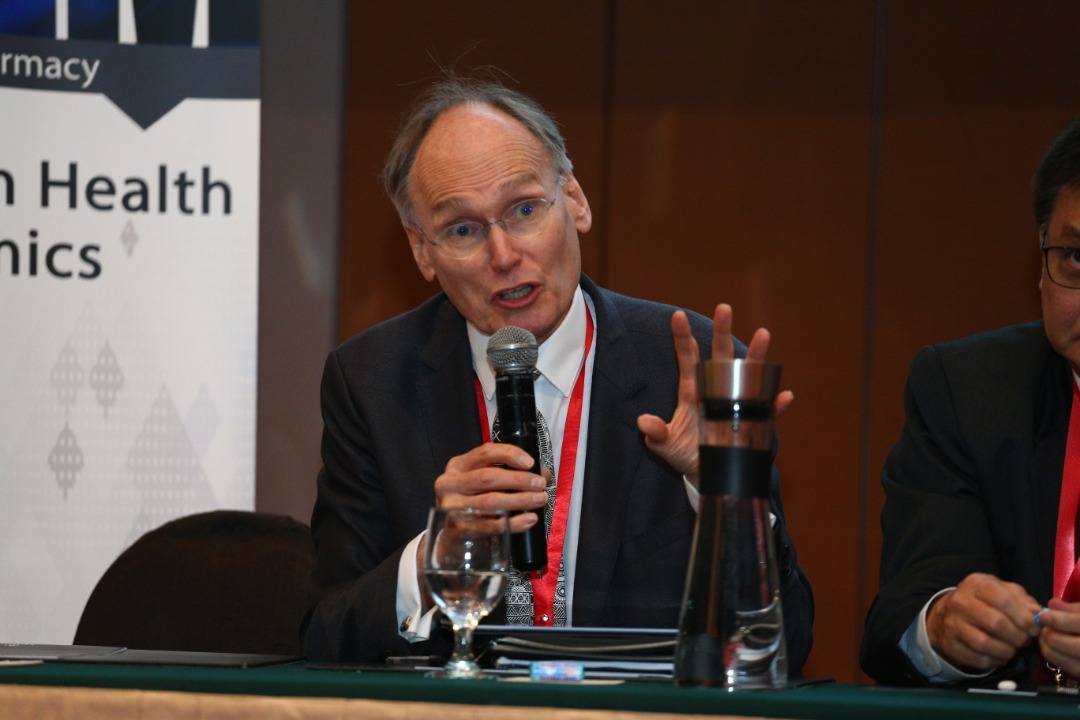PETALING JAYA, Dec 9 — High price mark-ups on drugs sold in private clinics and hospitals are better countered through competition rather than legislated price controls, a UK expert said.
Prof Adrian Towse, director emeritus of London-based health research and consultancy outfit Office of Health Economics, argued that external reference pricing — which Malaysia’s Ministry of Health (MOH) plans to adopt by setting local drug price ceilings based on prices in certain countries — undermined price differentiation across nations.
Charging different prices across rich and poor countries, he said, was the most efficient way for pharmaceutical companies to recover research and development costs on innovative products.
“I would argue that price competition is better than price control,” Towse told the Monash Health Economics Forum 2019 here last month, which was jointly organised by the Monash School of Pharmacy, MOH’s Pharmaceutical Services Division, and the Pharmaceutical Association of Malaysia (PhAMA).
“When there is no competition, which may well be the case of some individual products, then use of HTA to assess value is a better route than using price control based on either an arbitrary assessment of costs or the use of external reference pricing,” added the visiting professor at the London School of Economics, referring to health technology assessment (HTA).
HTA is a multidisciplinary process that evaluates the economic, social, organisational, and ethical issues of a health technology, including medicines, medical devices, and vaccines among others, to inform policy decision-making.
Towse suggested separating the prescribing and dispensing of medicines to doctors and pharmacists respectively in Malaysia so that patients can get cheaper prescription drugs from pharmacies.
But dispensing separation, he said, also required the government to allow private general practitioner (GP) clinics to charge higher consultation fees, which have been capped by legislation at the same RM10 to RM35 rate since 1992, since family physicians have been relying on the sale of medicines to sustain their business.
“If you cap that part and you cap another part, and the two caps together don’t allow them to stay in business, it’s not clear to me what happens as a consequence of that.”
Health Minister Dzulkefly Ahmad announced last Friday that the Cabinet has decided to deregulate private medical practitioners’ consultation fees, which means that GPs, dentists, and specialists in private clinics and hospitals will be free to set their own professional rates.
Towse pointed out that community pharmacies’ medicine price advantage over clinics and hospitals would disappear with price controls.
“Publish wholesale list prices so patients paying out-of-pocket can effectively see what the mark-ups are, and see if they want to take their prescription to a community pharmacy, or pharmacy chain or a clinic,” Towse suggested.
PhAMA, which represents multinational pharmaceutical corporations in Malaysia, has said its members are willing to declare wholesale medicine prices, though to MOH, not the public, as it opposed price regulations.
MOH is targeting single-source innovative drugs sourced through public procurement in its first phase of price controls by using external reference pricing to benchmark drug prices in Malaysia against seven to eight countries. The average three lowest reference prices will be chosen to determine the maximum medicine prices allowed in Malaysia at the wholesale and retail levels (clinics, hospitals, pharmacies).
But Towse observed that most public health expenditure in Malaysia was on generic, rather than original medicines: “I’m a little unclear how price control works as opposed to competition.”
He also warned that prices could rise if the ceiling prices were set too high.
“Price controls deter competition.”
Prof Adrian Towse, director emeritus of UK’s Office of Health Economics
“My preference would be moving towards value-based differential pricing,” Towse said.
Value-based differential pricing means that different markets have different prices depending on the country’s income, health system, and disease burden, with payers deciding what is a good use of their budget based on the clinical outcomes and extra cost to the health system.
“The critical point here is that individual health systems indicate what they’re willing to pay for health care,” Towse said.
“Optimal price levels and differences across markets can be achieved if each payer unilaterally sets an incremental cost effectiveness threshold based on its citizens’ willingness to pay for health and health-related gain. Manufacturers will price to that [threshold]. Payers should limit reimbursement to patients for whom a drug is cost-effective at that price.”
MOH’s Pharmaceutical Services Programme, he said, carries out an HTA, but noted that budget impact, rather than cost-effectiveness, is used as a criterion in deciding which medicines to list in the national formulary. But listing doesn’t necessarily lead to funding and providing those drugs in public health facilities.
“External reference pricing undermines differential pricing and exports pricing policy. Malaysia has experience and capability in HTA, so it makes sense to build on that and move to value-based pricing in the public sector,” said Towse.








